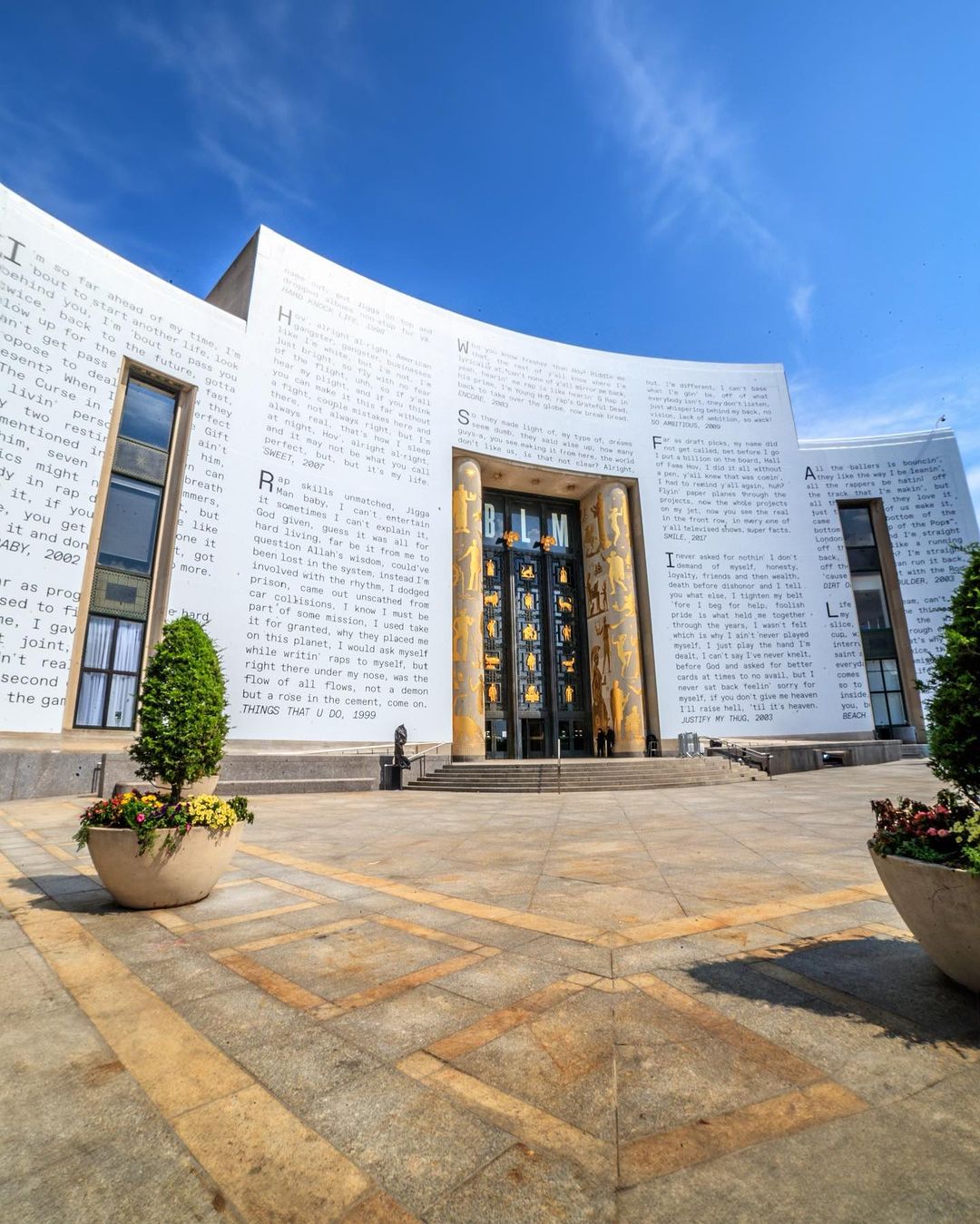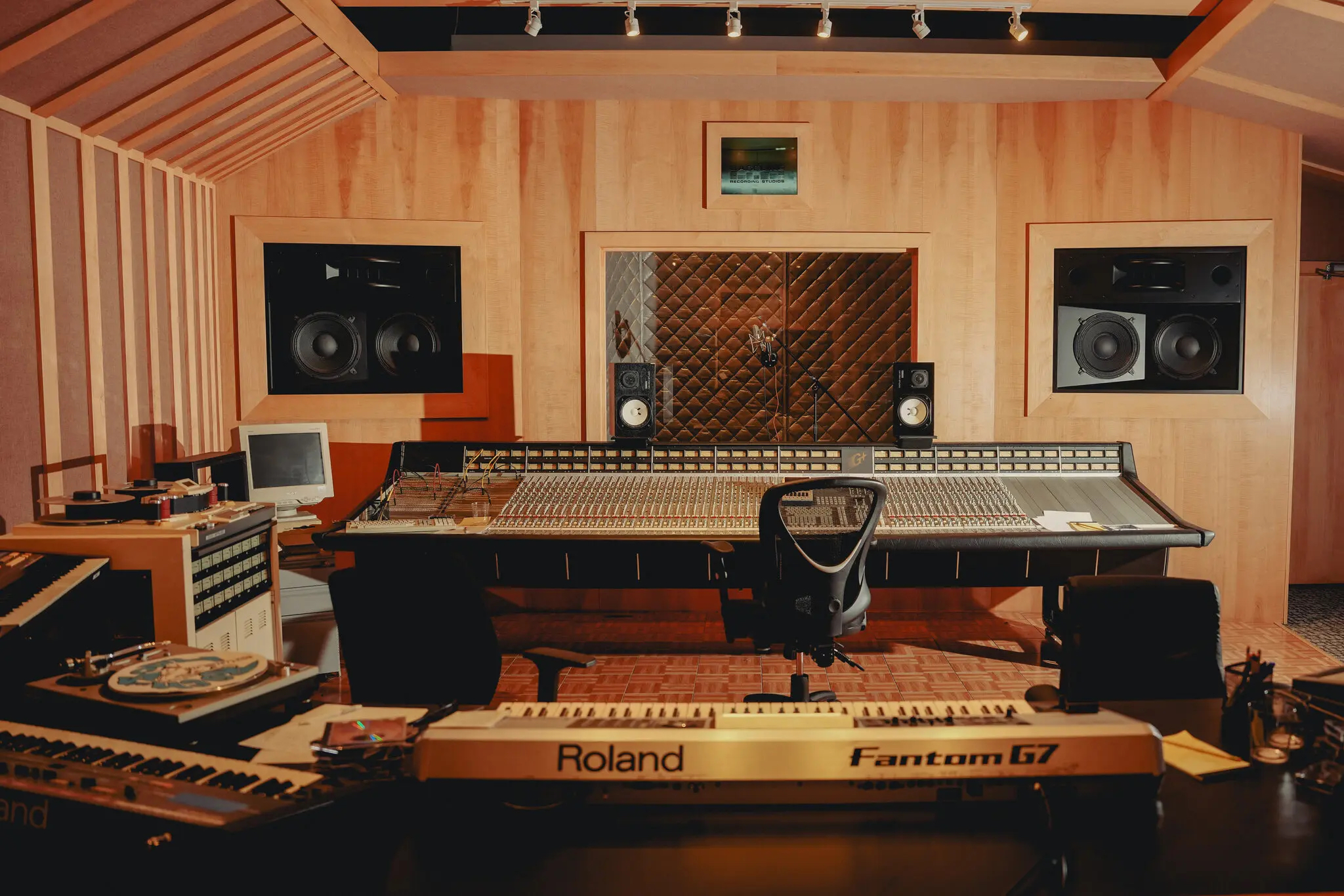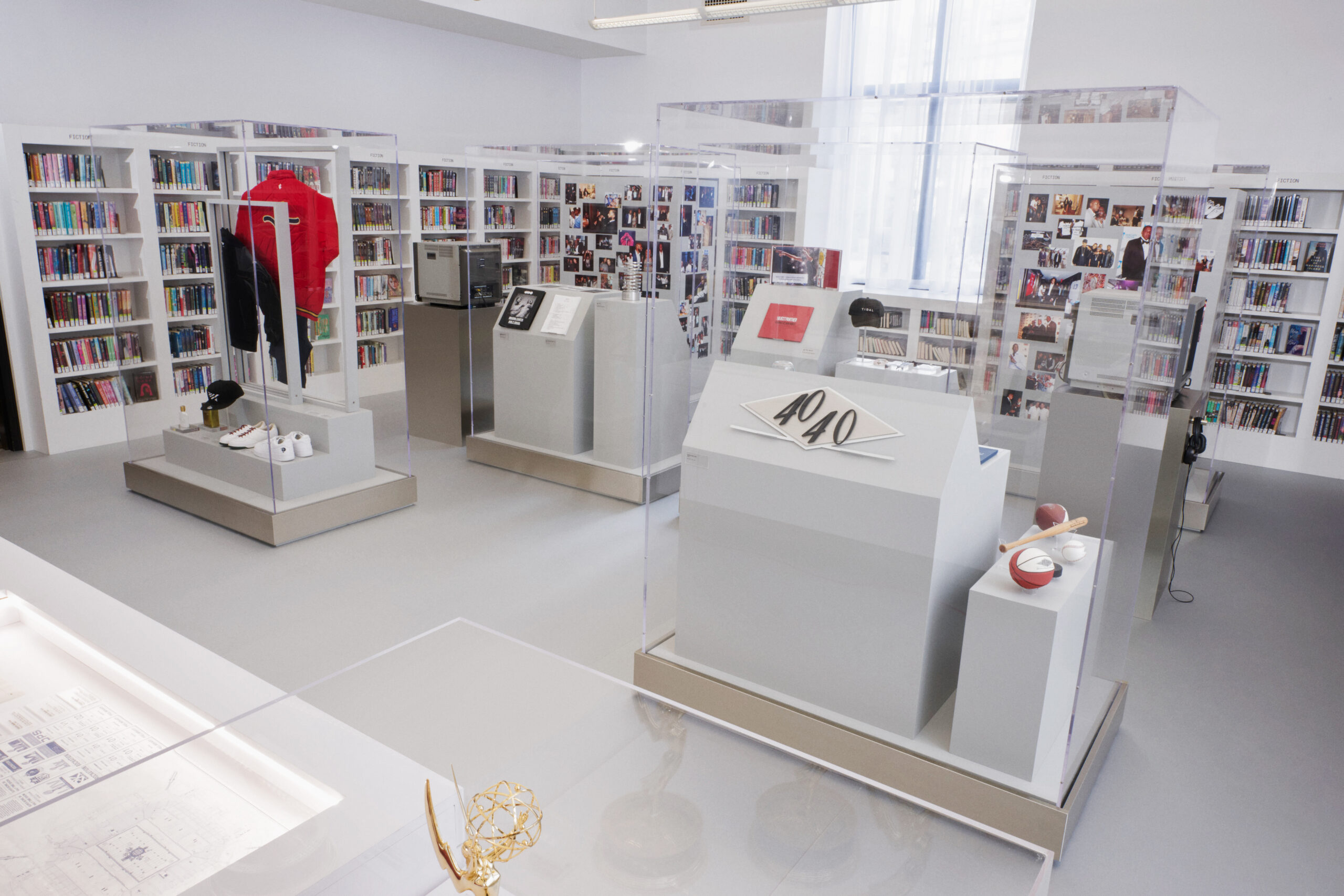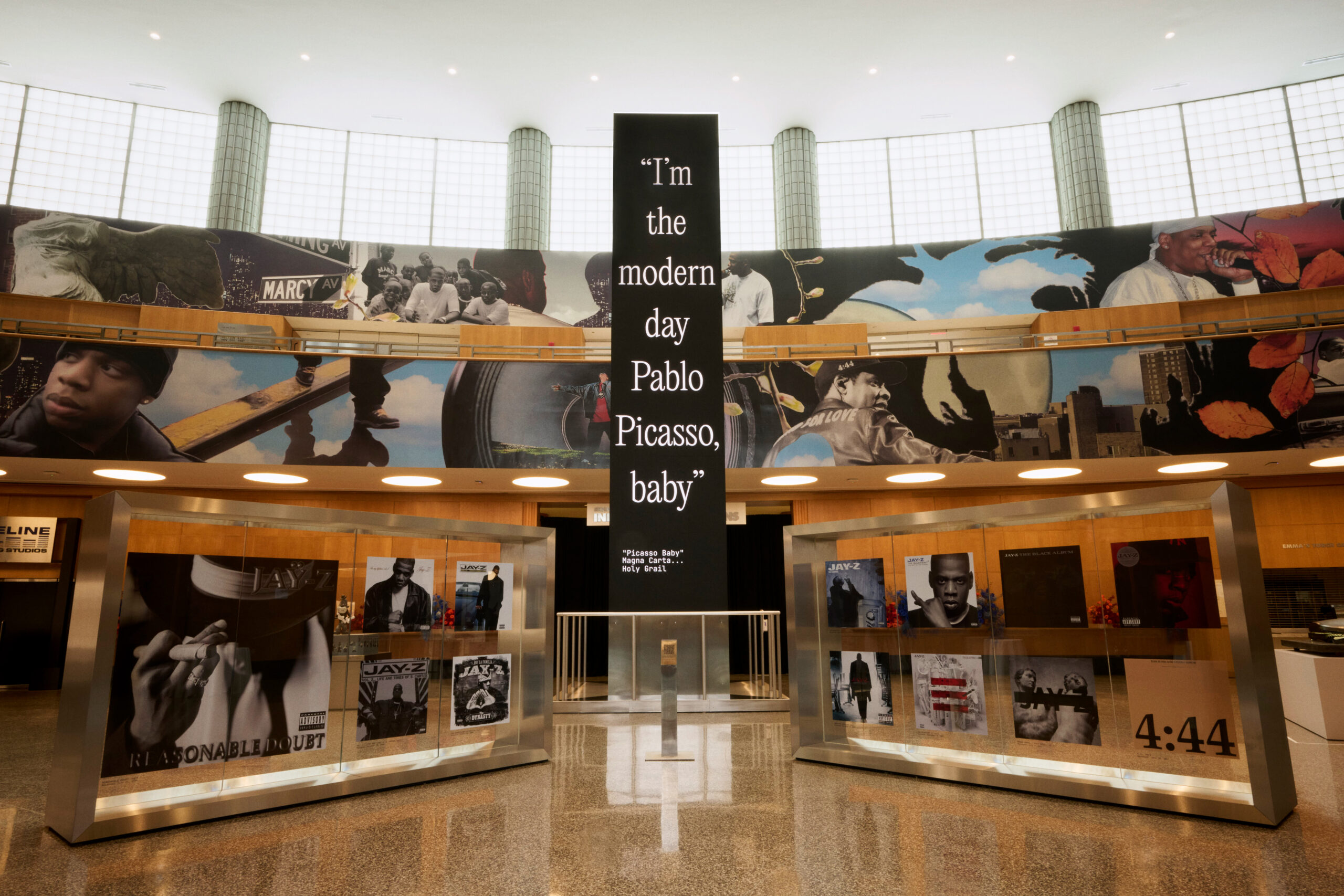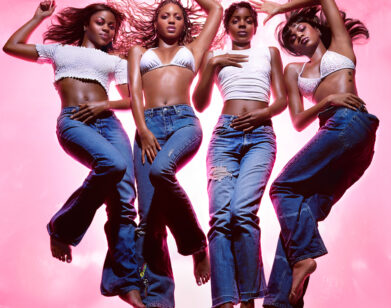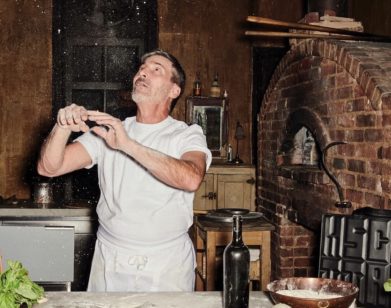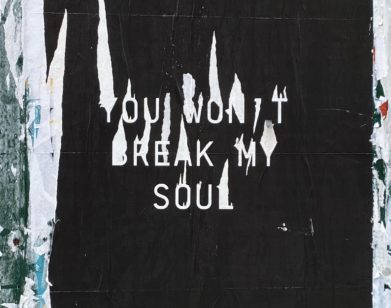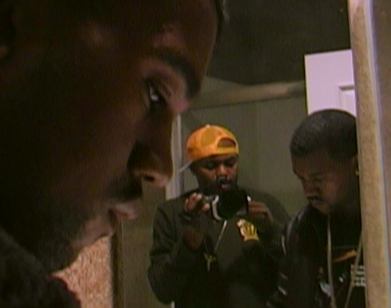hov
Inside the Jay-Z Retrospective at the Brooklyn Public Library
“I’m so far ahead of my time, I’m ’bout to start another life, look behind you, I’m ’bout to pass you twice,” read the Jay-Z lyrics plastered across the recent facelift of the limestone facade at the Brooklyn Public Library’s monumental Central Branch. Two Fridays ago, crowds flocked to the northern edge of Prospect Park for The Book of Hov, a tribute to one of the borough’s most beloved artistic exports. Without the rapper’s knowledge, Roc Nation and creative agency General Idea installed plaques, paintings, and more—including a replica of the storied Baseline Studios—throughout the library’s 40,000 square feet, beckoning visitors to immerse themselves in the life and times of Hov. After the opening, General Idea creative director Ian Schatzberg took five to give us the lowdown on creating the exhibition and honoring Jay.
———
MEKALA RAJAGOPAL: Great to meet you.
IAN SCHATZBERG: Thanks for having me.
RAJAGOPAL: What inspired you to take on a huge project like The Book of Hov with Roc Nation?
SCHATZBERG: Wanting to really study the lessons that exist within this individual’s career and what he believes in was the inspiration to participate in this project. It was a great honor to be invited to share it with the world, understanding how powerful the story would be. One of the cool things about this project is the story of Jay is so universal, but also so specific. And I think when you see the story in the exhibition, you acknowledge the universality of what it means to bet on yourself and create the world you want to see. So everyone may find things within it that really speak to them specifically about their personal journey.
RAJAGOPAL: What was it like to create this exhibition without Jay’s knowledge, since he’s been such a private figure?
SCHATZBERG: It’s just that much more of a responsibility to bring that story and that experience to life. I really applaud the people involved who were at the center of Jay’s world who helped to shape the different narrative threads and bring this story to life in his honor—versus having Jay produce it and direct it himself, which would’ve also, I’m sure, been amazing, but there’s sort of a difference. This was authored by the community he’s worked with, he’s influenced, he’s touched. That’s really powerful when you think about all the different hands that touched it.
RAJAGOPAL: What was it like to transform the library and create a space that makes sense to move through?
SCHATZBERG: It’s unique because it’s not a gallery space; it’s not an open-box container that you can populate at your own discretion. This is a highly utilized, iconic public building in New York City, and the story and design needs to work harmoniously within the context of what is already an institution of learning and wisdom and scholarship and community. The exhibition is woven into the fabric of the library and acknowledges the audiences that use the different rooms of the library. For instance, in rooms where music and audio already exist, we built upon that within that particular room. In rooms where young adults congregate, we created a library of Jay’s books for young adults to read and check out. So we really thought about the design process by balancing and weaving that into a public space that has a multitude of audiences that use it on a daily basis.
RAJAGOPAL: How was the opening?
SCHATZBERG: It’s just amazing to see the public reception of this exhibition because it was mounted as a surprise tribute and very tightly developed. Without naming names, it was amazing to see the multitude of different people, from friends and family, to city officials, to people of the community, that this story is relevant for on opening day.
RAJAGOPAL: How did you incorporate the music into the library, which is obviously meant to be a quiet space?
SCHATZBERG: There are areas where you can put on headphones at turntables to listen, and there’s an audio tour, so sound actually plays a really big part. And each section references a lyric.
RAJAGOPAL: And with all the objects, from chains to jackets to awards, what was the selection process like?
SCHATZBERG: Each of the rooms is associated with a different theme, whether that’s philanthropy, business, musical influence, or transcending culture. And the objects correspond to the narrative explored in that room. Let me explain this as something that it’s not: the exhibition is not chronologically told from the early life of Jay to today. If we had taken that approach, that would define artifacts and how they’re presented, but we filtered thematically so that people understood the vast reach of this individual’s cultural influence.
RAJAGOPAL: There’s currently a lot of discussion of artists rights and ownership of masters, a movement for which Jay-Z was definitely a catalyst in a lot of ways.
SCHATZBERG: Yeah. The approach was to present Jay-Z’s beliefs and values, and from my experience with his story and this project, he believes in betting on yourself and owning as much of yourself as possible. So the ownership of masters is an extension of that belief. I mean, that is something that he holds near and dear, whether that’s owning your masters or owning your distribution via his work with TIDAL. Own your work, own your rights.
RAJAGOPAL: Definitely. The exhibit touches on Rocawear and the fashion influence too, and there are so many fascinating eras of his fashion.
SCHATZBERG: I’m very interested in the evolution of him as a character within fashion, from the different eras that he went through to the brands he created and the style that he made popular. There’s just so much there, from the Yankees cap to fine suiting and fine tailoring. This is an individual who’s gone through many different stylistic periods. Those moments when he wore a durag and when he didn’t wear a durag, or the way he wears his hair now versus the way he wore it back then, all of it is part of the evolutionary arc of an artist and individual. If you look at Jazz Grant’s collage that wraps the entirety of the atrium, you can see a stylistic range from him as a young man to a contemporary individual. Jazz Grant’s work in the atrium is a highly visual and immersive representation of him across many different elements of his life, and you can see the stylistic diversity of how he presents himself in that collage. And it’s fascinating to go on that journey. It’s not a linear journey, but you see an individual who, over a long period of time, has inspired so many things.

